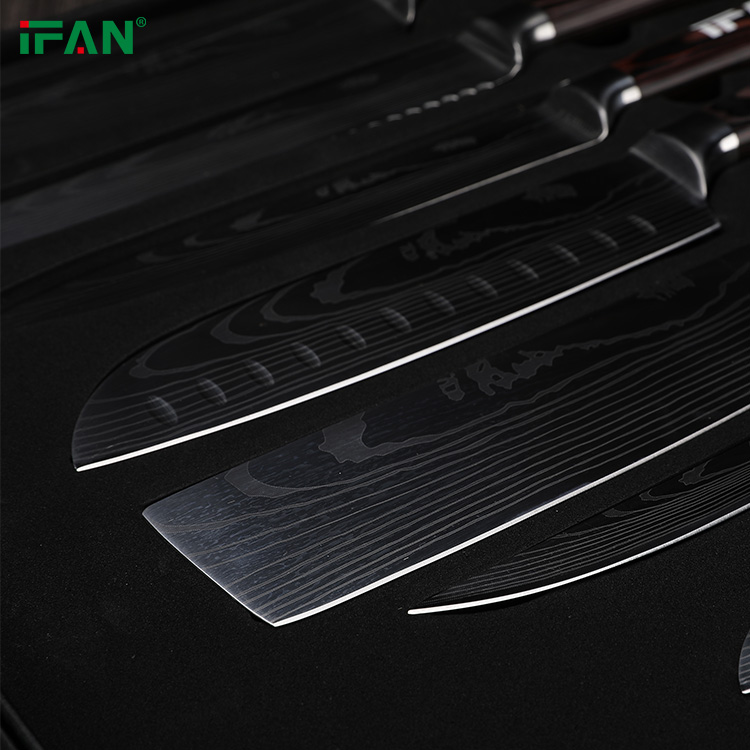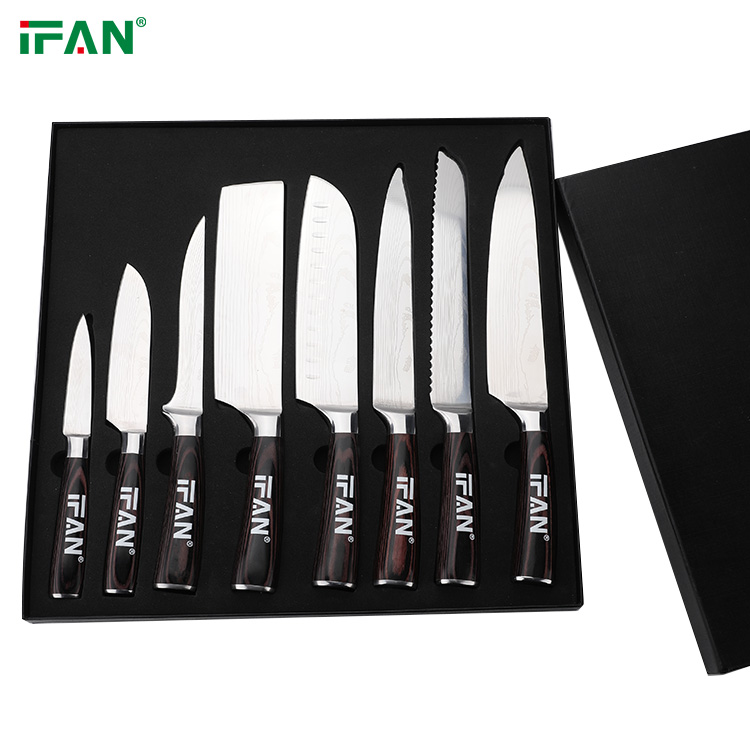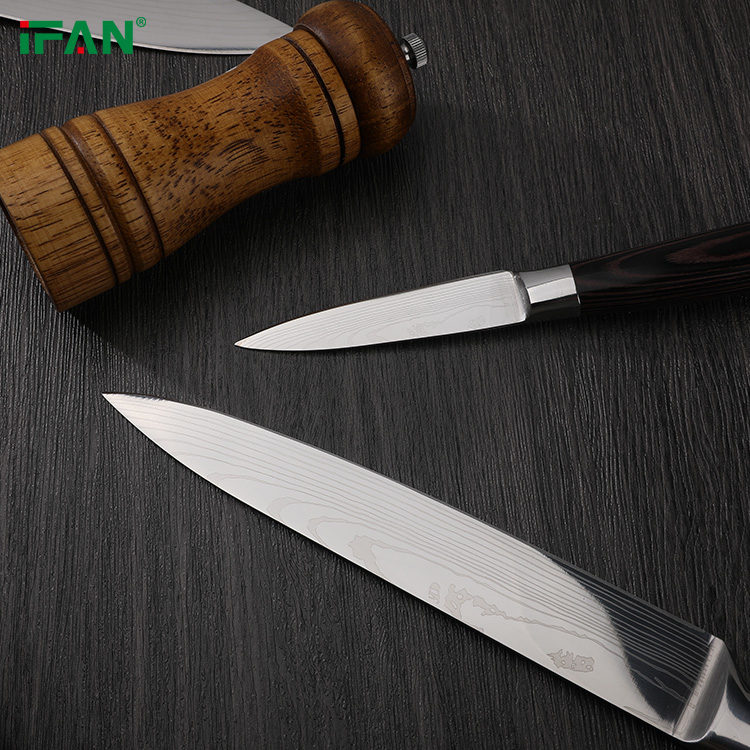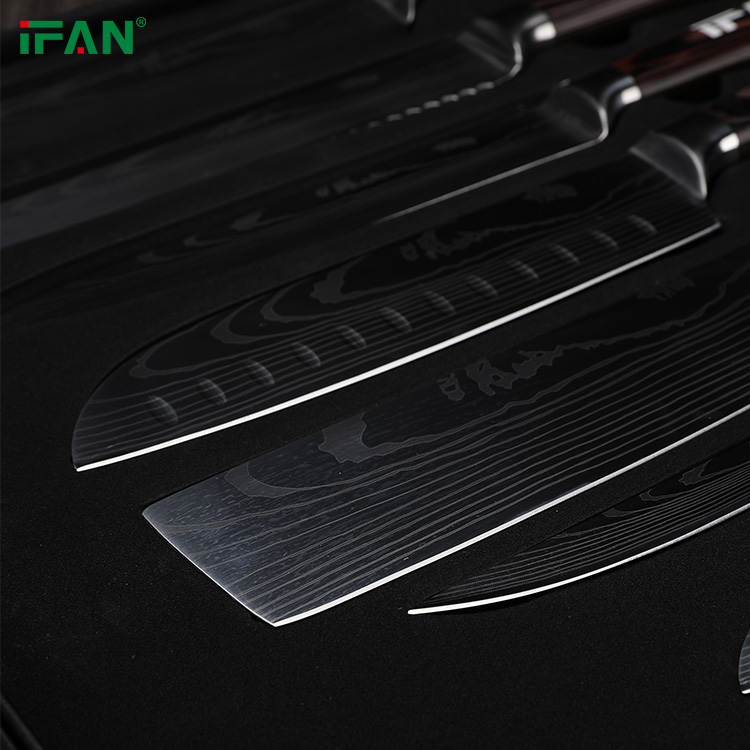Damascus knives are renowned for their exceptional craftsmanship, stunning visual appeal, and superior performance. Originating from ancient Damascus, now present-day Syria, these knives have a rich history dating back centuries. The distinctive patterns seen on Damascus blades are created through a unique forging process, resulting in blades that are not only visually striking but also highly durable and functional. In this comprehensive guide, we’ll explore the characteristics, history, manufacturing process, and benefits of Damascus knives.
Characteristics of Damascus Knives

- Unique Patterns: One of the most striking features of Damascus knives is their distinctive patterns, characterized by swirling, mottled designs reminiscent of flowing water or wood grain. These patterns are the result of the layering and folding of different types of steel during the forging process.
- Exceptional Strength: Damascus knives are renowned for their exceptional strength and durability. The layering and folding process used in their construction creates a blade with multiple layers of steel, which enhances its resilience and resistance to wear and tear.
- Superior Sharpness: Damascus knives are known for their razor-sharp edges, making them ideal for precision cutting tasks. The high-carbon steel used in their construction holds a sharp edge for longer periods, reducing the need for frequent sharpening.
- Excellent Edge Retention: Due to their high-carbon steel composition and advanced forging techniques, Damascus knives have excellent edge retention properties. This means that the blade maintains its sharpness even after prolonged use, resulting in consistent cutting performance.
- Versatility: Damascus knives are highly versatile and can be used for a wide range of cutting tasks, including slicing, dicing, chopping, and mincing. Whether in the kitchen, workshop, or outdoor setting, these knives excel in various applications.
- Artistic Appeal: Beyond their functional attributes, Damascus knives are prized for their artistic appeal. The intricate patterns and designs on the blade make each knife a unique work of art, cherished by collectors and enthusiasts alike.
History of Damascus Knives

The history of Damascus knives dates back to ancient times, with roots in the city of Damascus, renowned for its skilled blacksmiths and metallurgists. The earliest Damascus blades were forged using a technique known as pattern welding, which involved forge-welding layers of iron and steel to create a blade with superior strength and flexibility.
These early Damascus blades were highly sought after for their legendary sharpness, durability, and ability to hold an edge. They were prized possessions of kings, warriors, and nobility, symbolizing wealth, status, and power.
Over time, the art of Damascus steelmaking spread across the Middle East and eventually reached Europe and Asia through trade and conquest. The secret of Damascus steelmaking was closely guarded by master blacksmiths, leading to the mystique and allure surrounding these legendary blades.
Manufacturing Process of Damascus Knives
The manufacturing process of Damascus knives is a complex and labor-intensive craft that requires skilled artisans and meticulous attention to detail. While modern techniques and materials have evolved, the essence of Damascus steelmaking remains rooted in ancient traditions. Here’s an overview of the key steps involved in crafting Damascus knives:
- Selection of Steel: High-quality steel alloys, typically high-carbon steel and nickel, are carefully selected for their strength, durability, and compatibility with the forging process.
- Layering and Folding: The selected steel alloys are layered together and forge-welded under high heat and pressure. This process creates multiple layers of steel, which are then folded and forge-welded repeatedly to enhance the strength and uniformity of the blade.
- Pattern Development: During the forging process, the layers of steel are manipulated and shaped to create intricate patterns and designs on the blade. This is achieved through controlled heating, hammering, and manipulation of the metal.
- Heat Treatment: Once the desired pattern is achieved, the blade is heat-treated to optimize its hardness, toughness, and overall performance. This involves heating the blade to critical temperatures and then quenching it in oil or water to achieve the desired metallurgical properties.
- Grinding and Polishing: After heat treatment, the blade undergoes grinding and polishing to refine its shape, edge geometry, and surface finish. This step is crucial for achieving optimal cutting performance and aesthetic appeal.
- Handle Construction: The finished blade is then fitted with a handle, typically made of materials such as wood, bone, or synthetic composites. The handle is carefully shaped, secured to the blade, and finished to ensure a comfortable grip and balanced weight distribution.
Benefits of Damascus Knives

- Exceptional Performance: Damascus knives are prized for their exceptional performance, offering razor-sharp edges, superior strength, and excellent edge retention.
- Durability and Longevity: The advanced forging techniques and high-quality materials used in Damascus knives result in blades that are highly durable and capable of withstanding rigorous use.
- Artistic Value: Beyond their functional attributes, Damascus knives are valued for their artistic beauty and craftsmanship, making them prized possessions for collectors and enthusiasts.
- Versatility: Damascus knives are highly versatile and can be used for a wide range of cutting tasks, making them indispensable tools in the kitchen, workshop, or outdoor setting.
- Heritage and Tradition: Damascus knives have a rich heritage and tradition that spans centuries, connecting contemporary artisans with ancient metallurgical techniques and craftsmanship.
In conclusion, Damascus knives are not only exquisite works of art but also superior cutting tools renowned for their exceptional performance, durability, and versatility. Rooted in ancient traditions and craftsmanship, these legendary blades continue to captivate and inspire enthusiasts around the world, embodying the timeless allure of Damascus steelmaking.

